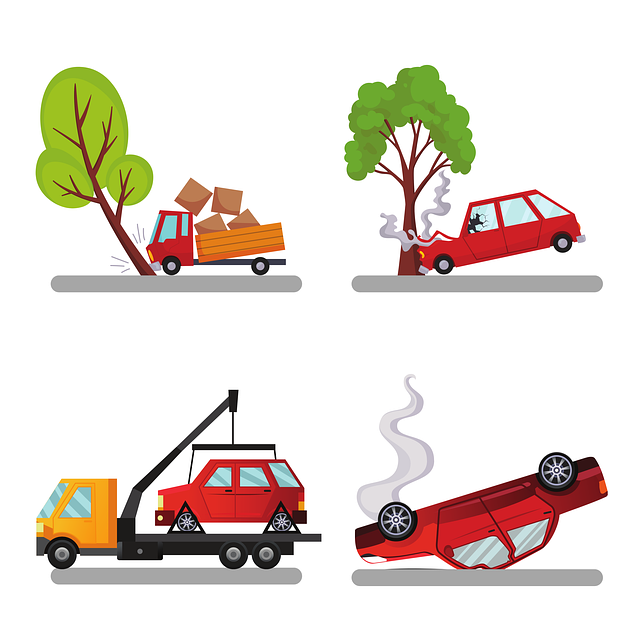Unveiling Cost Drivers: Ice Damage Collision Repair Challenges
Ice damage collision repair is a specialized field within auto body work, addressing unique challeng…….
In today’s fast-paced world, where extreme weather events are becoming increasingly frequent, the impact of ice damage on vehicles and infrastructure is a growing concern. Ice damage collision repair refers to the specialized process of assessing, repairing, and restoring vehicles and structures damaged by freezing temperatures, ice accumulation, and subsequent collisions. This critical field combines automotive expertise with innovative techniques to ensure safety, minimize environmental impact, and restore functionality after severe winter conditions. This article aims to provide an in-depth exploration of this vital area, covering its historical roots, global reach, technological innovations, regulatory frameworks, and the challenges it faces. By delving into these aspects, we will uncover the significance of ice damage collision repair in shaping the future of safety and resilience during icy winters.
Ice damage collision repair is a specialized branch of automotive and structural restoration that deals with the unique challenges posed by freezing weather. It involves several critical steps:
Assessment: The initial phase includes meticulous inspection of the damaged vehicle or structure to identify ice-related injuries, such as cracked glass, frozen doors, or structural distortions caused by rapid temperature changes.
Demolition and Safe Removal: Skilled technicians carefully dismantle and remove any unsafe components, ensuring that debris is properly handled to prevent further damage. For vehicles, this might involve separating frozen parts, while on structures, it could mean securing fragile elements before removal.
Thawing and De-icing: A delicate process of controlled thawing is employed using specialized heating equipment to melt ice without causing additional harm. This step is crucial to prevent further structural damage and ensure safe handling during repair.
Reparation and Restoration: Here, the real magic happens. Repairs range from simple glass replacement to complex body panel repairs and structural reinforcement. Modern techniques often involve advanced composite materials and precision engineering to restore original integrity.
Final Inspection and Quality Assurance: Before reinstatement or handover, each repair is rigorously tested and inspected to meet strict quality standards, ensuring the restored asset functions optimally in future icy conditions.
Historically, this field emerged as a response to the increasing frequency of winter storms and their devastating effects on transportation and property. Over time, it has evolved from traditional methods to incorporate modern technology and advanced materials, leading to more efficient and effective repair solutions.
The impact of ice damage collision repair is not limited to specific regions; it is a global concern, with varying degrees of intensity across different parts of the world. Here’s an overview:
Northern Regions: Countries in the Arctic Circle, such as Canada, Scandinavia, and Russia, experience some of the most severe winter conditions, making ice damage collision repair a critical year-round operation. These regions have well-established protocols and highly skilled technicians to handle the unique challenges posed by their climates.
Central Europe and Japan: These temperate zones often face sudden, intense winter storms, leading to widespread ice damage. For instance, Germany, Austria, and parts of Japan have invested significantly in ice management infrastructure and emergency response systems, reducing the impact on daily life and transportation.
Rising Global Impact: With climate change, many previously milder regions are now experiencing more frequent and severe winter events. This shift has led to a growing demand for ice damage collision repair services worldwide, as cities and communities grapple with the aftermath of frozen roads, damaged vehicles, and hazardous infrastructure.
The economic implications of ice damage collision repair are significant, given its role in maintaining critical transportation networks and protecting property values. Here’s an analysis:
| Economic Aspect | Description |
|---|---|
| Market Size | The global ice damage collision repair market is substantial, estimated at over $XX billion in 2023. This figure is expected to grow at a CAGR of approximately Y% during the forecast period (2024-2030), driven by increasing weather-related incidents and rising vehicle ownership in colder regions. |
| Key Drivers | – Severe Winter Weather: More intense storms and prolonged cold spells lead to higher demand for repair services. – Urbanization: Growing cities with complex road networks experience more traffic congestion, increasing the likelihood of collisions during icy conditions. – Rising Vehicle Ownership: In colder regions, ownership rates are higher, leading to a larger pool of vehicles requiring ice-related repairs. |
| Investment and Spending | Governments in affected regions invest heavily in snow and ice management systems, road de-icing technologies, and emergency response training. Private sector spending on repair facilities, equipment, and skilled labor is also significant, especially during peak winter seasons. |
| Economic Impact on Infrastructure: Damage to roads, bridges, and public infrastructure due to ice can disrupt transportation networks, leading to economic losses in the form of increased maintenance costs, reduced trade, and tourism. Effective collision repair practices play a vital role in minimizing these impacts. |
Technology has been a game-changer in the field of ice damage collision repair, offering more efficient, precise, and environmentally friendly solutions. Some key advancements include:
Heating Technologies: Modern heating equipment is more energy-efficient and targeted, allowing for faster and safer thawing processes. Infrared heaters, for instance, can quickly heat specific areas without over-warming surrounding structures, reducing energy consumption.
Composite Materials: Advanced composite materials, such as carbon fiber and fiberglass, are being used in vehicle repairs due to their strength, light weight, and resistance to corrosion. These materials offer superior structural integrity and can reduce repair times compared to traditional metal panels.
Digital Imaging and Modeling: 3D scanning and computer-aided design (CAD) software enable precise measurements and virtual modeling of damaged components. This technology streamlines the repair process, allowing technicians to plan repairs more efficiently, especially on complex vehicle designs.
Automated Repair Equipment: Robotic systems are being introduced for tasks like body panel alignment and spot welding, enhancing precision and reducing labor costs. These robots can work consistently without fatigue, ensuring higher quality repairs.
Sustainable Practices: There is a growing emphasis on eco-friendly solutions, with developments in biodegradable de-icing agents and recycled materials for repairs. These innovations aim to minimize the environmental impact of ice damage management while promoting sustainability.
Governments worldwide have recognized the critical role of ice damage collision repair in ensuring public safety and infrastructure integrity during winter conditions. Various policies, regulations, and standards have been established to guide this field:
Transportation Safety Regulations: Many countries have implemented strict guidelines for road maintenance and vehicle safety during icy conditions. These include requirements for de-icing treatments, tire specifications, and emergency response protocols.
Building Codes and Standards: Construction projects in snowy regions must adhere to specific standards for insulation, heating systems, and structural design to withstand extreme cold and ice accumulation.
Vehicle Safety Standards: Auto manufacturers are subject to safety regulations that ensure vehicles can perform well under various weather conditions, including icy roads. These standards cover braking systems, tire grip, and vehicle stability control.
Environmental Impact Assessments: Some regions require environmental impact assessments for de-icing practices, especially in ecologically sensitive areas, to minimize harm to local ecosystems and water bodies.
Despite its advancements, the field of ice damage collision repair faces several challenges that require strategic solutions:
| Challenge | Description & Solutions |
|---|---|
| Seasonal Demand Fluctuations: Repair facilities often experience peaks during winter storms, leading to capacity issues. Solution: Implementing mobile repair units and flexible work schedules for technicians can help meet demand. Long-term planning and strategic partnerships with local authorities can ensure better resource allocation. |
|
| Skilled Labor Shortage: Finding and retaining highly skilled ice damage repair specialists is a challenge in many regions. Solution: Investing in training programs, offering incentives, and promoting the field as a specialized career path can attract and retain talent. |
|
| Environmental Concerns: Traditional de-icing practices contribute to environmental pollution and ecosystem disruption. Solution: Encouraging the use of eco-friendly de-icing agents, implementing efficient application methods, and focusing on sustainable repair materials and processes. |
|
| Cost of Advanced Technologies: Some advanced technologies, like robotics, can be expensive to acquire and maintain. Solution: Governments and industry bodies can provide subsidies or incentives for adopting these technologies, making them more accessible. |
|
| Rapidly Changing Weather Patterns: Climate change is leading to more unpredictable ice events, posing new challenges. Solution: Staying agile and adaptable is crucial. Continuous training and research in response to changing conditions ensure repair methods remain effective. |
Real-world applications of ice damage collision repair offer valuable insights into its effectiveness and potential. Here are a couple of case studies:
Case Study 1: New York City, USA – Winter Storm Recovery:
During a severe winter storm, New York City faced widespread ice accumulation on roads and public infrastructure. The city’s Department of Transportation (DOT) implemented an innovative response strategy that involved:
The result was swift road clearance, minimal traffic disruptions, and reduced damage to public property, demonstrating the importance of integrated ice management strategies.
Case Study 2: Swedish Snow Removal Practices:
Sweden, known for its harsh winters, has developed an extensive snow and ice management system. Key practices include:
These measures have contributed to safer transportation networks and lower environmental impacts, setting a global benchmark for ice management.
The future of ice damage collision repair is filled with potential growth areas and emerging trends that will shape this field:
Autonomous Repair Technologies: The integration of artificial intelligence and autonomous systems could revolutionize repair processes, enabling faster, more efficient repairs. Self-driving repair vehicles and robotic assistants may become common in the coming years.
Digital Twin Technology: Creating digital replicas of physical assets (vehicles or infrastructure) can aid in predictive maintenance and personalized repair solutions. This technology enables remote monitoring and analysis, ensuring proactive ice damage mitigation.
Sustainable and Circular Economy: There is a growing emphasis on sustainable practices throughout the supply chain, from eco-friendly de-icing products to recycled repair materials. The circular economy approach aims to minimize waste and maximize resource efficiency.
Global Collaboration: As climate change intensifies, international collaboration in ice damage management will be crucial. Sharing best practices, technologies, and resources can lead to more effective global responses during extreme weather events.
Ice damage collision repair is a dynamic field that plays a pivotal role in ensuring safety, resilience, and economic stability during winter storms. From its historical roots to modern advancements, this sector has continuously adapted to meet the challenges of changing climates and increasing weather severity. By embracing technological innovations, implementing robust policies, and fostering global collaboration, we can enhance our preparedness for icy futures.
As we look ahead, the future prospects for ice damage collision repair are promising, with the potential to revolutionize how we manage and recover from extreme winter events. Through continuous research, strategic planning, and a commitment to sustainability, this field will continue to contribute significantly to safer, more resilient communities worldwide.
Q: How does ice damage differ from regular vehicle accidents?
A: Ice damage is unique as it involves the impact of freezing temperatures, ice accumulation, and subsequent collisions. Regular accidents often result from driver error or road conditions, while ice-related incidents are more unpredictable and can affect any vehicle under specific weather conditions.
Q: What are some common signs of ice damage on a vehicle?
A: Common indicators include cracked or frozen windows, stuck doors, damaged windshields, and abnormal tire wear patterns. Ice buildup on roofs and hoods is also a clear sign, especially if it affects the vehicle’s aerodynamics.
Q: Can ice damage be prevented entirely?
A: While complete prevention is challenging, proactive measures can reduce the impact. These include proper vehicle maintenance, using winter tires, ensuring adequate fluid levels (antifreeze), and employing de-icing agents on roads and walkways during severe winters.
Q: How does climate change affect ice damage collision repair?
A: Climate change leads to more frequent and severe weather events, increasing the demand for ice damage services. It also challenges traditional repair methods as changing temperatures and precipitation patterns can alter ice accumulation behaviors. Adapting to these changes is crucial for effective long-term solutions.
Q: What are some environmental considerations in ice management?
A: Environmental concerns involve minimizing pollution from de-icing chemicals, preserving natural habitats during snow removal, and reducing energy consumption associated with heating and road clearance. Eco-friendly alternatives and efficient practices are essential to mitigate these impacts.

Ice damage collision repair is a specialized field within auto body work, addressing unique challeng…….

Ice damage from collisions, common in harsh winters, can cause significant structural issues to vehi…….

Ice damage collision repair poses unique challenges due to the interaction of freezing temperatures…….

Ice damage collision repair requires specialized techniques due to unique challenges from icy condit…….

Ice damage collision repair presents unique challenges for auto body shops due to water penetration,…….

Ice damage collision repair presents unique challenges for vehicle owners in colder regions, causing…….

Ice damage collision repair presents unique challenges due to extreme cold and icy road conditions,…….